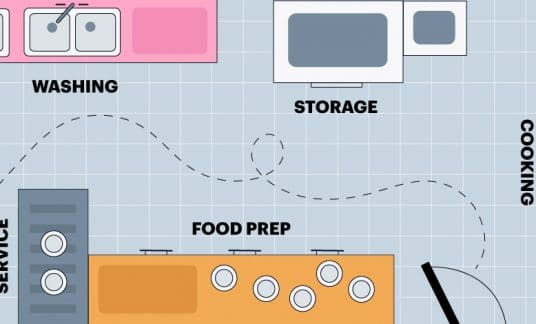Although it’s impossible to please everyone, you should always strive to deliver high quality customer service. Handling tough customers starts by managing client expectations. But, when that fails, humanize the situation. Use a bit of psychology, along with good listening and a lot of patience.
Ways to Handle Difficult Customers
Let’s face it; as a small business owner, you’re bound to come across a dissatisfied customer. The issue might be a failure on your end; or it could be due to client expectations versus client budget. At the moment, when you’re facing an angry customer, the reason doesn’t matter. Instead, it’s vital to dial down the emotions and resolve the issue.
It’s challenging to handle a client scolding you, whether that’s in person or via email. Fortunately, you can pause the conversation and take a step back — no matter where it takes place.
It’s not only business owners who come into contact with irritated clients — your staff and management team will encounter their fair share. That’s why it’s a good idea to communicate with your team. Go through different client handling techniques, then ask them, “How would you handle a customer complaint?”
Start by putting yourself in your client’s shoes. Next, defuse the situation by using these 8 tactics.
1. Let the Customer Know That You Understand
When an angry client comes to you with a problem, you don’t always know the source of their anger. Instead of bombarding them with technical questions, start with a simple response: I understand.
This phrase immediately tells your client that you empathize with their feelings; it acknowledges their frustration and inconvenience. By offering a sympathetic ear, you help your client feel a human connection. You’re telling them you understand their perspective and value their opinion.
Remember that all people want to feel valued and accepted. In many cases, once you utter these 2 words, you bring down the anger level. Once that’s done, move on to the root of the problem and come to a resolution.
2. Be Attentive to Their Talking Points
As a small business owner, listening is one of the best tools at your disposal. If an unhappy customer comes to you and you’re distracted, then you risk further angering them. Avoid:
- Checking your phone or glancing at your watch
- Turning away from your client to use a screen to pull up data
- Staff interruptions and phone calls
Instead, give your customer your full attention by making eye contact and following the conversation. Now, an irate customer doesn’t always make sense. You don’t have to stand there for hours. But, give your client a few minutes to let off steam. Then guide them toward a resolution.

3. Personalize the Conversation
No customer wants to feel like a number. Use whatever information you have to personalize the conversation and make them feel appreciated. Even the most humble folks want to feel important when venting about a problem that is out of their control. That’s why it’s essential to build relationships with your clients at all times.
Mention that you appreciate their repeated visits and understand that your client is a valued customer. Search for a personal middle ground to achieve an emotional connection. This isn’t the time to be the big boss or heavy-handed manager. Try sharing relevant information based on what you know:
- If your customer wears sports gear, then use sports as your lead into a resolution. “Hey, Lakers fans always come first. Let’s make this right.”
- If both you and your customer are parents, then relate to that as well. “I’m a parent too, so I know how frustrating it is when your kid’s new game doesn’t work. Let’s get them smiling again.”
4. Prioritize Immediate Action
Along with an assurance that it won’t happen again, your customers want the problem fixed immediately. In a heated moment, they don’t care about you finding out what went wrong. Nor do they have the patience to wait for a solution. If you’re unable to solve their problem immediately, then offer a reasonable and convenient quick fix.
For example, if it’s an issue about a defective product, but you have none in inventory, then have a back-up plan in place. Perhaps, you sell a similar item or can provide a discount. Be clear about when and how your customer will receive the replacement. Don’t forget to emphasize how you value their time by using phrases such as, “I’m sincerely sorry for your inconvenience.”

5. Use Positivity
Much of dealing with customers relates to emotional management. When responding to clients, it can be easy to meet their negativity with your negativity. Instead, think about your word choice and choose positive terms and phrases. Customer service is about what you say and what you do. Examples of effective positive language include:
- Quickly
- Certainly
- Absolutely
- Completely
- Immediately

6. Thank Your Customer
This seems simple, but doing it right away affects the overall tone of the conversation. Thanking your customers signifies that you appreciate their communication, whether it’s positive or negative. It also shows that you value them as a client on the good and bad days. You could say, “I appreciate you bringing this to my attention” or “Thank you for pointing this out.”
7. Take Responsibility and Be Transparent
In plenty of cases, a problem doesn’t stem from something you or your company did. Instead, it might be an issue of client expectation versus client budget. Or it may relate to something else that’s entirely outside of your realm of responsibility, like an argument with a family member or just a bad day.
Again, the reason doesn’t matter. Immediately take responsibility and let your client know that you’ll take action.
But what if you’re unsure about what type of action to take or need more information? Be transparent. If you don’t have an immediate answer, then let your client know the steps you’ll take to resolve the matter.

8. Avoid Negative Emotional Triggers
While handling a customer complaint, it’s important to not fall privy to triggering actions or language. This is where it’s important to read your customer’s behavior. Avoid triggering a negative response by doing the following:
- Giving people enough space by taking a step back
- Keep your hands loose at your side, don’t wave them around
- Avoid touching your customers, even a pat on the back can trigger a negative emotion
- Watch your language and tone of voice to avoid sounding condescending
9. Handle Negative Online Complaints and Reviews
Even though the forum is different, many of the points for managing face-to-face customer complaints can be adapted to resolving negative customer posts and reviews online.
Whether you find a negative review or comment on a site such as Yelp or your business’s social media pages, or a customer tags your business in a critical social media post, a thoughtful, thorough response can help you address the situation, maintain your business’s good standing and potentially retain that customer.
Follow these steps when responding to an online customer complaint or negative review:
- Reply and acknowledge the issue: It can be tempting to ignore a negative review or to minimize its impact by encouraging other, more positive reviews. However, it’s better to directly address the matter in an online reply.
- Address the concern and reinforce your business’s commitment to customer service. For example, “We’re sorry your experience didn’t reflect our standard of providing our customers with an outstanding dining experience.”
- Continue the conversation offline. Provide the customer with a specific name and way to contact someone at your business, whether it’s you or someone else. This can be a more productive way to move toward a solution.
- Offer a resolution or compensation. You might be able to resolve the situation with a refund or replacement. When appropriate, you can also offer the customer a discount or complimentary product or service when they patronize your business again.
Managing Client Expectations
Client expectations play a huge role in how you handle angry customers. Each customer complaint is an opportunity to review your process and refine your customer handling techniques. Take into consideration how managing client expectations could reduce complaints.
First, narrow down where the initial sign of the problem occurred. In many cases, the customer isn’t angry over one thing. Instead, it’s a series of events that affected the customer experience. The last issue was just what pushed them over the edge.
Once you’ve handled the situation, review the customer’s journey and how they got to this point. Could any of your processes have prevented the customer’s frustration? For instance, do you offer online support channels and self-help options? Is this issue a problem that’s been noticed by other clients?
By digging deeper into the issue, you can locate holes in your customers’ journeys. Then use that information to create a seamless experience. Client retention is a big challenge for small business owners; however, monitoring customer expectations is one way to boost your rates.
Examples of Unrealistic Customer Expectations
Learning how to handle tough clients is part of your job as a small business owner. However, even seasoned customer service experts run across people who are impossible to satisfy.
For example, restaurant owners take the heat when a non-affiliated third-party delivery service fails. Although a third-party’s handling of the order or delivery time is out of the restaurant owner’s control, customers call the restaurant to complain. Likewise, you may have received complaints about postal delivery times as well. Although you state delivery time-frames and recommend upgrading for faster delivery, sometimes this issue is merely a case of high client expectations versus a low client budget.
If you face unrealistic customer expectations, then you have a few options to handle this angry customer. While some cases are cut and dried, you may make decisions on a case-by-case basis. For instance, when facing an issue with a long-time customer or a lucrative contract, you may decide it’s in your best interest to make a concession. Perhaps, you perform an extra service or deliver a free product to solve the issue.
But, if you’ve invested a serious amount of time and effort into satisfying a customer, to the point where you’re losing money, then it may make sense to cut ties. Making this decision is never easy. Carefully choose your wording and avoid pointing fingers. Instead, explain that you understand your client’s perspective and appreciate the opportunity to work with them. Then, let them know that you’ve done all you can and are unable to proceed.
Regardless of the expectation, it benefits you and the customer to resolve it as best as possible. Seek a solution, then review and revise your process. If you can get ahead of a recurring problem by addressing it on your website, in your FAQs, or on social media, then do so.
Manage Tough Situations With Ease
Handling demanding clients can be mentally draining. Reduce complaints by managing client expectations. But, when you struggle with how to handle an angry customer, take a deep breath and put yourself in your customer’s shoes. A good faith effort to resolve the issue puts you and your brand in a favorable light.










